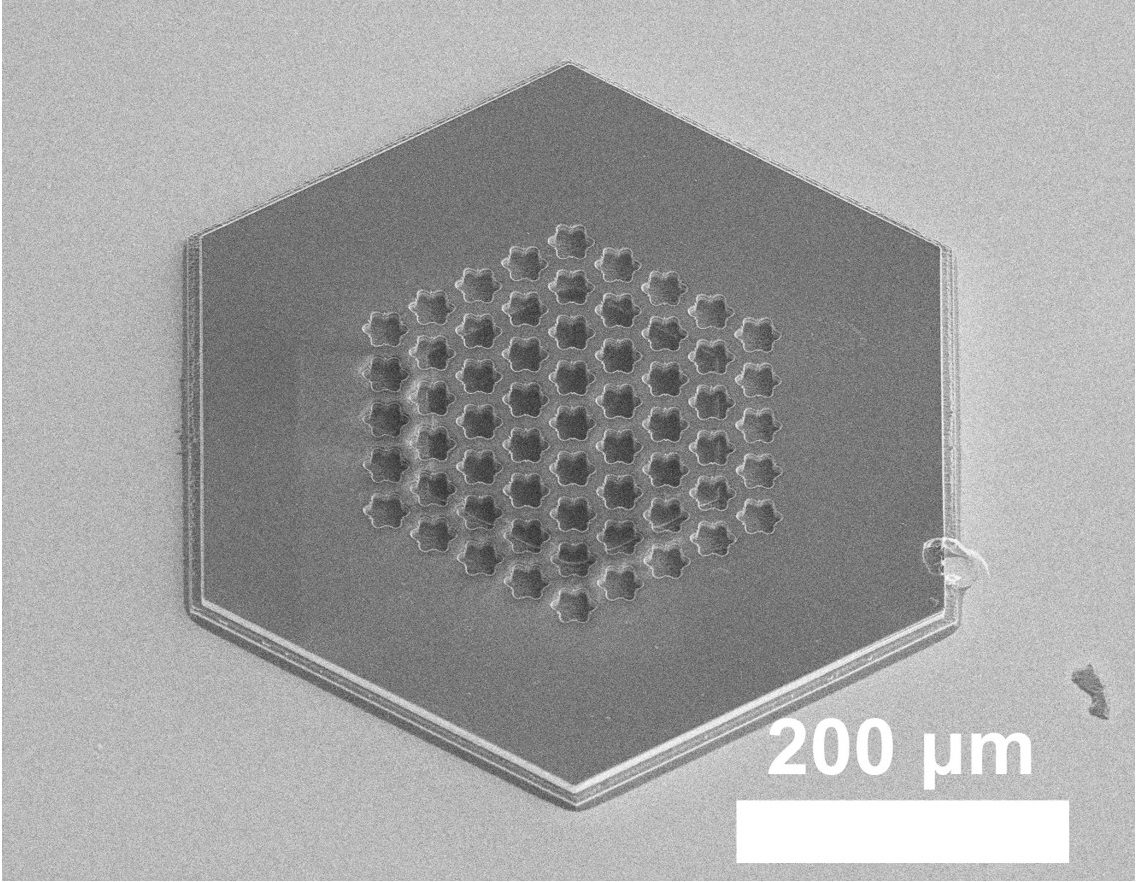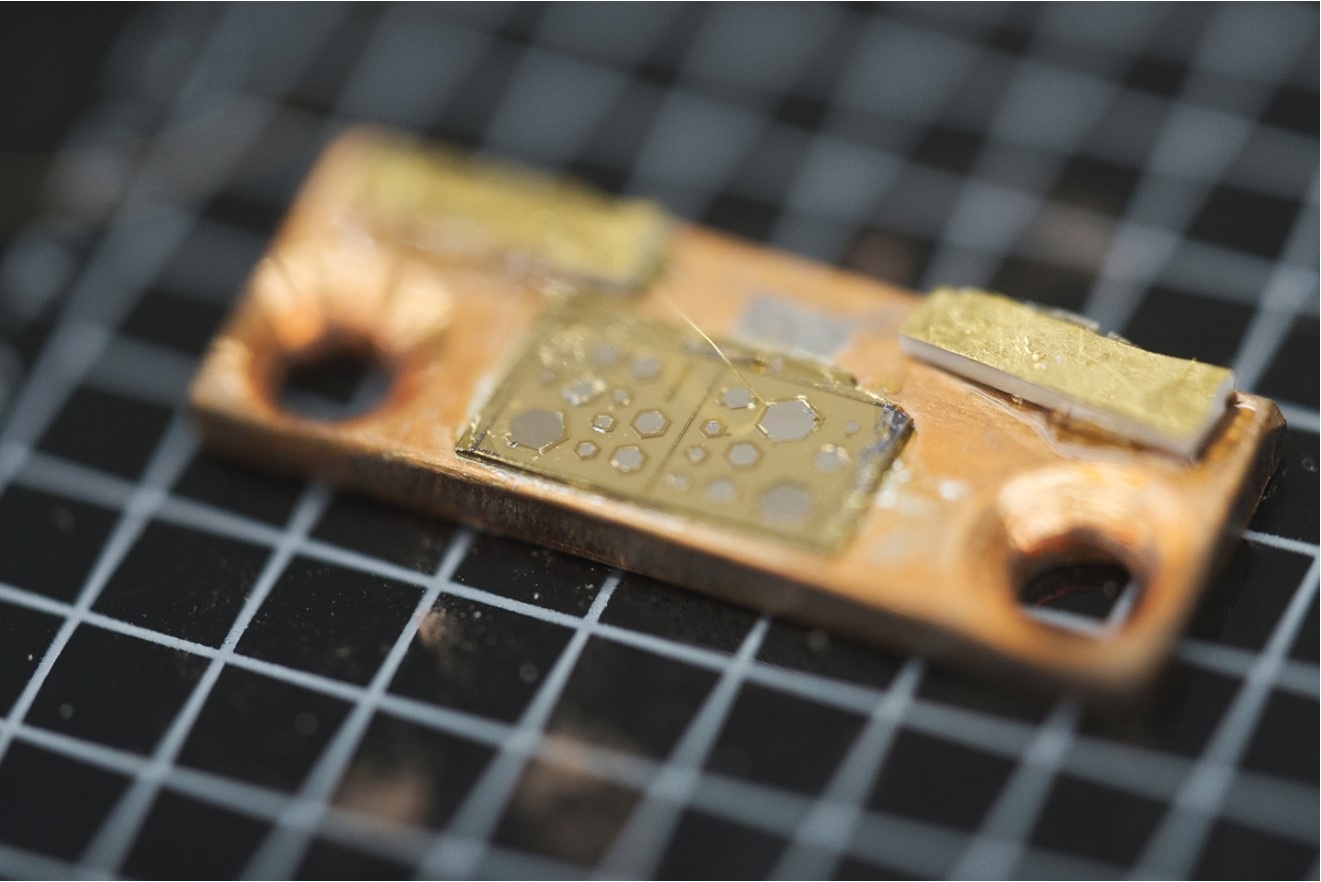14 Aug 2025
An international team of scientists led by Nanyang Technological University, Singapore (NTU Singapore) has developed a new type of ultracompact laser that is more energy efficient and consumes less power.
Smaller than a grain of sand, the micrometre-sized laser incorporates a special design that reduces light leakage. Minimising light loss means less energy is required to operate the laser compared to other highly compact lasers.
The laser emits light in the terahertz region (30 μm – 3 mm), a 6G communications frequency, and could pave the way for high-speed wireless communication of the future.
The research was published in Nature Photonics in April 2025.
Why lasers lose light
Ultracompact lasers have a wide range of applications across various industries, particularly in small devices. They are also essential for next-generation technologies such as optical computing, data centres, high-speed communication, medical imaging and advanced sensors.
However, the performance of these miniature lasers is hampered by the loss of light.
Some of this loss occurs due to side leakage from the laser cavity – a major component of lasers that confines and amplifies light to produce the laser beam.
Light is also lost by radiation and when it is scattered by imperfections in the photonic crystal, which is constructed from semiconductor materials to control the propagation of light.
These loss-inducing effects are more significant in ultracompact lasers than larger lasers. In some cases, the loss of light is so severe that it prevents tiny lasers from emitting sufficient light for practical purposes.

The periodic arrangement of daisy-shaped airholes in the laser cavity reduces light loss by leakage, scattering and radiation. Credit: NTU Singapore.
Reducing light loss in all directions
To prevent light loss, the new NTU laser harnesses flat bands and a phenomenon known as multi bound states in the continuum (BIC).
Flat bands are energy bands in the photonic crystal where light waves have near-zero group velocity – a measure of how fast energy carried by light moves. At near-zero group velocity, the energy carried by light waves does not travel out of the laser cavity.
Similarly, multi BIC confines light in the laser cavity and prevents it from escaping in various directions while still allowing the laser to emit sufficient light for practical use. As with noise-cancelling earphones, specific wave patterns in light cancel out the parts that would usually escape. The design of the cavity also makes it difficult for light to get out.
To reduce light loss due to leakage, scattering and radiation, the researchers designed a laser cavity that combines concepts from both flat bands and multi BIC.
They created a periodic arrangement of daisy-shaped holes in a photonic crystal consisting of a semiconductor material sandwiched between two gold layers.
According to the researchers, this could potentially be the “ultimate” solution to suppress light leakage from a laser cavity in three dimensions.
The laser also produces a highly focused beam with minimal divergence, making it useful for precise optical applications.
By scaling the size of the airholes and the lattice constant – the spacing between atoms in the photonic crystal – the design can be extended to create lasers that emit other wavelengths, such as near-infrared and visible light.

Close-up view of the holes. Credit: NTU Singapore.
“Drawing on our more than fifteen years of experience in photonic band structure engineering, we recognised that combining flat-band concepts with BIC could effectively trap light and reduce losses,” says Prof Wang Qijie of NTU’s School of Electrical and Electronic Engineering (EEE) and School of Physical and Mathematical Sciences, who was the lead investigator of the study.
“Our laser overcomes the drawbacks of existing miniature lasers, opening the door to applications ranging from next-generation wearable technology to optical computing,” says Dr Cui Jieyuan, research fellow at NTU’s EEE, who was first author of the paper.
“The innovation is a breakthrough in topological photonics and opens a new pathway for compact, robust and scalable light sources in integrated photonic systems,” says photonics expert Assoc Prof Zhen Bo from the University of Pennsylvania, who was not involved in the research.
The researchers are now working to enhance the power of the laser and integrate it into optoelectronic devices. They have also filed a technical disclosure for the innovation and are looking for industry collaborators to bring the technology to market.
Read more in “Ultracompact multibound-state-assisted flat-band lasers” published in Nature Photonics, 28 April 2025.





